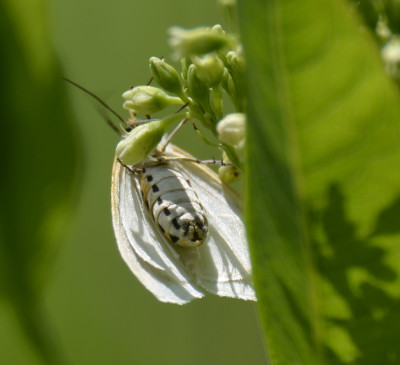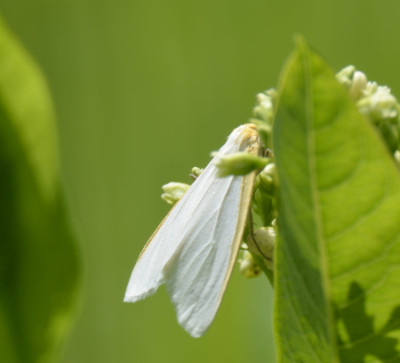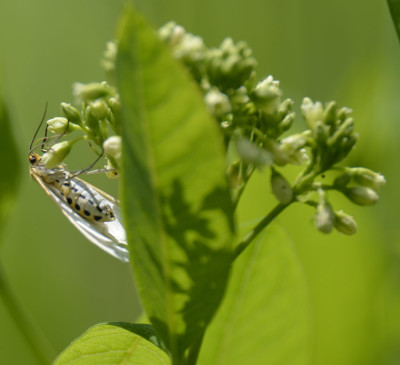This showy white insect is a moth not a butterfly although it does fly in the daytime. The “veins” on the wings are quite noticeable and there is a fine yellow line along the outer edge of the folded wings that continues almost to where the wing makes a 90 degree turn. The body of the moth has quite distinct markings as shown in the photos. This is a Delicate Cycnia moth.
It’s Not a Delicate Cynthia Moth
For a few months, I was convinced the name of this moth was a Delicate Cynthia. In fact, I quite like that name. Unfortunately for me, it’s actually a Delicate Cycnia. I’m not even sure how to pronounce that!
Do Delicate Cycnia Moths Make Sounds?
I always think of moths as being silent creatures except for the sound of large Sphinx moths bashing against a window screen in the evening. These Cycnia moths, however, reportedly make a clicking sound. The purpose is still being studied. It may prevent a bat’s signals from detecting the moth properly, or, more likely it may be a warning to bats that the moth is poisonous due to the chemicals it accumulated as a caterpillar from eating dogbane and milkweed. You can read about this in a BBC article called Four animals that trick their opponents with sound.
What Do the Delicate Cycnia Caterpillars Eat?
First, I hope I find some of their caterpillars some day. They look like a type of Wooly Bear.
According to BugGuide they feed on milkweed and Dogbane (Indian Hemp.) So I guess I should connect this to my other articles on Milkweed predators!
Related Reading
Milkweed Predators:
- Milkweed Tussock Moth Caterpillars
- Monarch Butterfly Caterpillars
- Red Milkweed Beetles
- Large and Small Milkweed Bugs
Join In
Do you have a favourite day-time-flying moth? Please share your observation with a comment.




